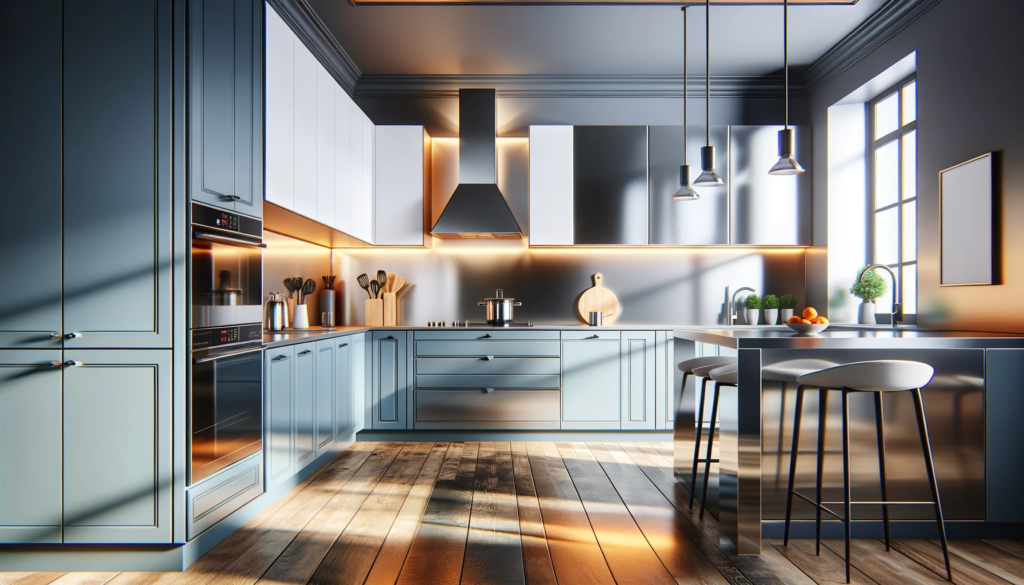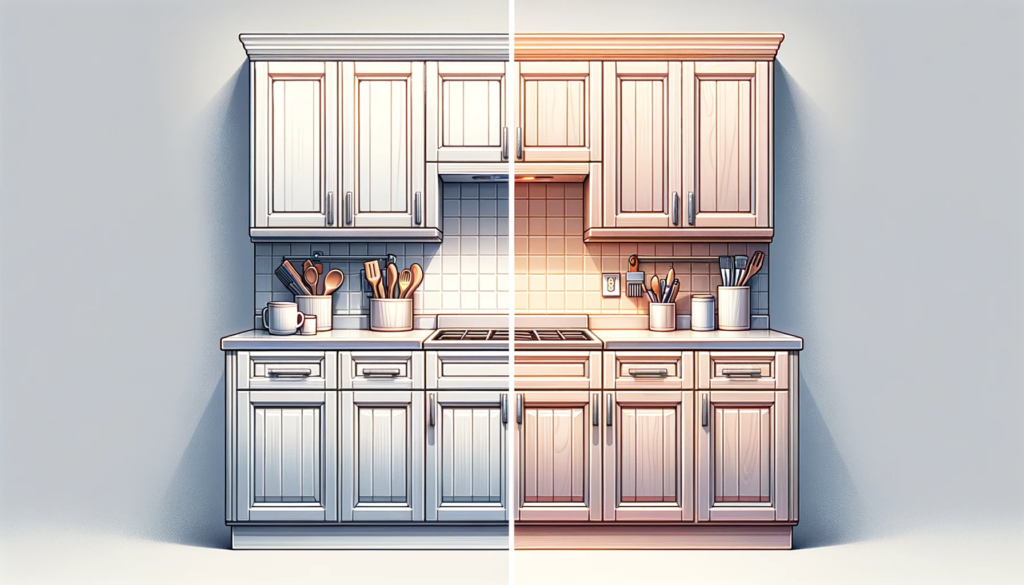In the heart of every kitchen lies its cabinets, not just for their functionality but also for their contribution to the overall aesthetic. Choosing the right finish for these cabinets is crucial, as it dictates not only their appearance but also their longevity and ease of maintenance.
This introduction delves into the nuances of satin and semi-gloss finishes, two popular choices that each bring their unique characteristics to the table. We’ll explore the subtle elegance of satin and the practical, reflective charm of semi-gloss, guiding you to make an informed decision that suits your kitchen’s style and your personal preferences. This journey through finishes is not just about choosing a coating; it’s about defining the heart of your kitchen.
Satin Finish Kitchen Cabinets
The satin finish on kitchen cabinets offers an appealing blend of aesthetics and functionality, making it a favored choice for many homeowners. Its signature feature is a soft, low sheen that provides a smooth, velvety look, distinct from the high gloss of more reflective finishes. This subdued sheen not only adds a touch of sophistication to your kitchen but also plays a practical role in the day-to-day use of the space.
Satin finishes are excellent at concealing minor flaws, such as scratches and dents, which are common in busy kitchen environments. This is due to its ability to scatter light, rather than reflecting it directly, thus softening the appearance of imperfections. This quality is particularly valuable in a setting where cabinetry is subject to frequent use and the inevitable wear and tear that comes with it.
Moreover, the aesthetic appeal of a satin finish extends beyond its surface characteristics. It enriches the depth and tone of the cabinet color, creating an inviting, warm ambiance in your kitchen. This enhancement of the cabinet’s color and texture contributes significantly to the overall atmosphere of the space.
When it comes to maintenance, satin finishes strike a practical balance. While they are easier to clean than matte finishes, they do not show smudges and fingerprints as readily as glossier finishes. This makes them a practical option for maintaining a clean and polished look with minimal effort. Regular cleaning with a damp cloth is often sufficient, but it’s important to avoid abrasive cleaners that can dull or damage the finish.
In terms of durability, satin finishes offer a good level of protection against everyday use. They are more resistant to moisture and stains compared to matte finishes, which is a crucial consideration in the humid environment of a kitchen. However, they may not be as resilient as high-gloss finishes in extremely wet conditions.
Choosing a satin finish for your kitchen cabinets is not just a matter of aesthetic preference. It’s also a practical decision that balances the need for a stylish, welcoming kitchen with the realities of everyday use and maintenance. The satin finish provides a harmonious blend of elegance, functionality, and durability, making it a versatile choice for any kitchen style.

Semi-Gloss Kitchen Cabinets
The semi-gloss finish is a popular choice for kitchen cabinets due to its striking balance between practicality and visual appeal. Characterized by a higher sheen level than satin, semi-gloss finishes reflect light more effectively, giving cabinets a vibrant, crisp appearance. This reflective quality not only enhances the color and vibrancy of the cabinets but also contributes to making the kitchen space appear brighter and more spacious.
One of the key advantages of a semi-gloss finish is its remarkable resistance to moisture, a vital feature in the kitchen environment. This resilience makes it an ideal choice for areas prone to splashes and spills, as it effectively repels water, thereby preventing damage to the wood beneath. Moreover, the smooth surface of a semi-gloss finish is exceptionally easy to clean, requiring only a simple wipe down to remove dirt and grime. This ease of maintenance is a significant benefit, especially in a high-traffic area like the kitchen.
However, it’s important to note that the higher reflectivity of a semi-gloss finish can also highlight imperfections on the cabinet surface. Scratches, dents, and uneven textures are more visible under this type of finish, which may require more meticulous preparation and maintenance to ensure a flawless appearance.
In summary, a semi-gloss finish offers a durable, moisture-resistant, and easy-to-clean option for kitchen cabinets, making it an excellent choice for those who prioritize functionality and a clean, bright aesthetic. Its reflective properties not only enhance the beauty of the cabinets but also contribute to the overall ambiance of the kitchen. However, its tendency to highlight surface imperfections requires consideration, particularly in kitchens with heavy usage or older cabinetry.

Comparative Analysis Between Satin and Semi-Gloss Finish
When comparing satin and semi-gloss finishes for kitchen cabinets, the choice largely depends on personal preference, usage, and the overall style of the kitchen. Satin finishes offer a muted, sophisticated look with a softer sheen. They are good at hiding imperfections and provide a classic, elegant appearance. However, they might require more maintenance and are slightly less durable against moisture than semi-gloss finishes.
On the other hand, semi-gloss finishes boast a higher sheen, which makes them more reflective and vibrant. They are excellent for moisture resistance and are easier to clean, making them ideal for busy kitchens. But, they tend to highlight surface imperfections and might be too glossy for some tastes.
Both finishes have their unique advantages and considerations, and the decision between them should be based on the specific needs and aesthetic goals of your kitchen space.

Factors to Consider When Selecting Finish for Your Kitchen Cabinets
When considering whether to choose a satin or semi-gloss finish for kitchen cabinets, there are several factors to weigh. First, think about the overall aesthetic you want to achieve. Satin offers a more subdued, elegant look, while semi-gloss is brighter and more vibrant. Consider the maintenance level you’re comfortable with; satin might need more frequent touch-ups, whereas semi-gloss is easier to clean and more moisture-resistant. Also, think about the longevity and durability you need, especially in high-use areas.
Another important factor to consider is the lighting and color scheme in your kitchen. Satin finishes, with their softer sheen, tend to absorb light, which can subtly alter the appearance of the cabinet color under different lighting conditions. This can create a warm, inviting ambiance. In contrast, semi-gloss finishes reflect light, potentially making colors appear more vibrant and the space brighter. This can be particularly beneficial in kitchens with limited natural light. Additionally, the color of your cabinets can influence the choice of finish; darker colors might benefit from the soft sheen of satin to reduce glare, while lighter colors might be enhanced by the reflective qualities of semi-gloss.
Conclusion
When choosing between satin and semi-gloss finishes for kitchen cabinets, it’s essential to balance aesthetic preferences with practical needs. Satin offers a subtle elegance and is better at hiding imperfections, suitable for a sophisticated look. Semi-gloss, with its higher sheen, provides durability and ease of cleaning, ideal for a bright and lively kitchen. Ultimately, the decision should reflect your personal style and the specific requirements of your kitchen, ensuring both beauty and functionality coexist harmoniously in your home’s most frequented space.